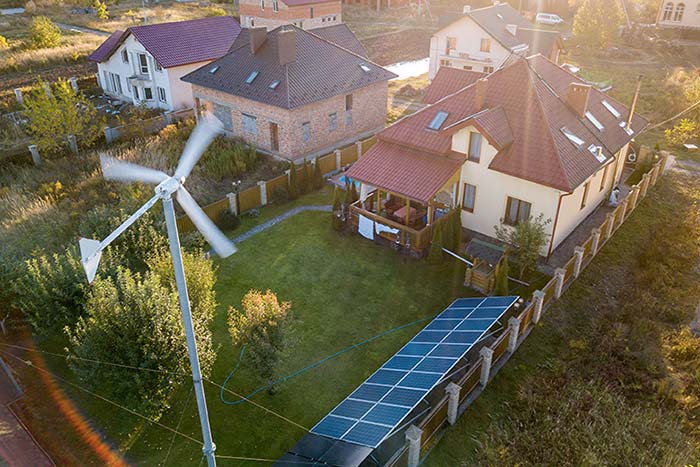

Like other renewable energy sources, wind turbines produce clean energy, which means less carbon footprint in the atmosphere. Land-based wind energy production is far more beneficial to the environment than traditional energy sources such as fossil fuels. The energy produced from these wind farms is more than 12 gigawatts yearly – significantly contributing to the country’s national power grid. Today, the UK has more than 1,500 active land-based wind farms. Onshore wind power production went commercial in the country in 1991. The UK is a significant utilizer of wind projects for generating electrical energy.
#Cost of home wind turbine free
Its wind farms are ideally located in fields or areas with small populations where there are fewer obstacles to disrupt the free flow of air most wind turbines need to generate electric energy. Onshore wind energy simply means wind power being generated from commercial wind turbines on a land-based wind farm. Let’s delve into their meaning to appreciate their capacity, efficiency, and differences fully. Offshore Wind Energy: Which Does it Better

Numerically, if wind speeds go from 30 mph to 15 mph, the electricity generated will reduce by 1/8 of what it was producing when the wind was stronger. However, wind turbines depend on strong wind to produce enough electricity because a drop in wind conditions will significantly reduce the electricity generation output. The wind farm is at its most productive capacity when the wind’s speed hits a minimum of 30 miles per hour. As we said earlier, the size matters, so if the output is a single megawatt or thereabouts, it’s most likely small wind turbines. Most onshore wind turbines produce between a range of 1-5 megawatts of electricity yearly. Even a wind turbine producing 1 megawatt can meet the annual electricity demand of 300 homes. This is enough energy to power several homes for a year. More than enough to heat many residential pools. An average onshore wind turbine can generate 2-3 megawatts of electricity yearly, while an average offshore wind turbine can produce almost 4 megawatts of electricity yearly. The location of the wind turbine also determines how much electricity a wind turbine can produce – we have onshore wind turbines and offshore wind turbines. This means the better harnessing of wind energy and the generation of more electricity. The improvements in technology in recent years have greatly benefited the wind industry because it has resulted in manufacturers making taller wind turbines. In essence, the taller the turbine, the longer the wind turbine blades and the more effective it becomes in generating renewable energy from wind resources. Location (onshore or offshore wind farms).Just like solar power, in which the number and type of solar panels and the hours of sunlight determine the amount of electricity produced, the ability of a wind turbine to meet your electricity demand depends on the following: How Much Electricity Does a Wind Turbine Produce? The foundation (to secure the turbine to the ground and give it stability).The nacelle (it provides housing for the electrical parts, generator, and gearbox).
#Cost of home wind turbine generator
Horizontal axis turbines keep the generator on ground level)

The same principle applies when generating electricity via wind turbines. Naturally, kinetic energy is produced when the wind blows. Today, wind power is the largest renewable energy source and the most cost-effective large-scale renewable electricity in the US.īefore we can look at how much power one wind turbine can produce, let’s look at how wind turbines work. Staggering prospects indeed! Now, think about the contribution of wind farms to the power grid. This is enough power to run six homes for an entire year. A modern wind turbine can produce about 8 Megawatts of electricity. The potential of wind power to create electricity for cities or communities is very promising. According to the US Geo Survey, a typical wind turbine will produce more than 843,000 kilowatt hours (kWh) monthly at a 42% capacity.


 0 kommentar(er)
0 kommentar(er)
